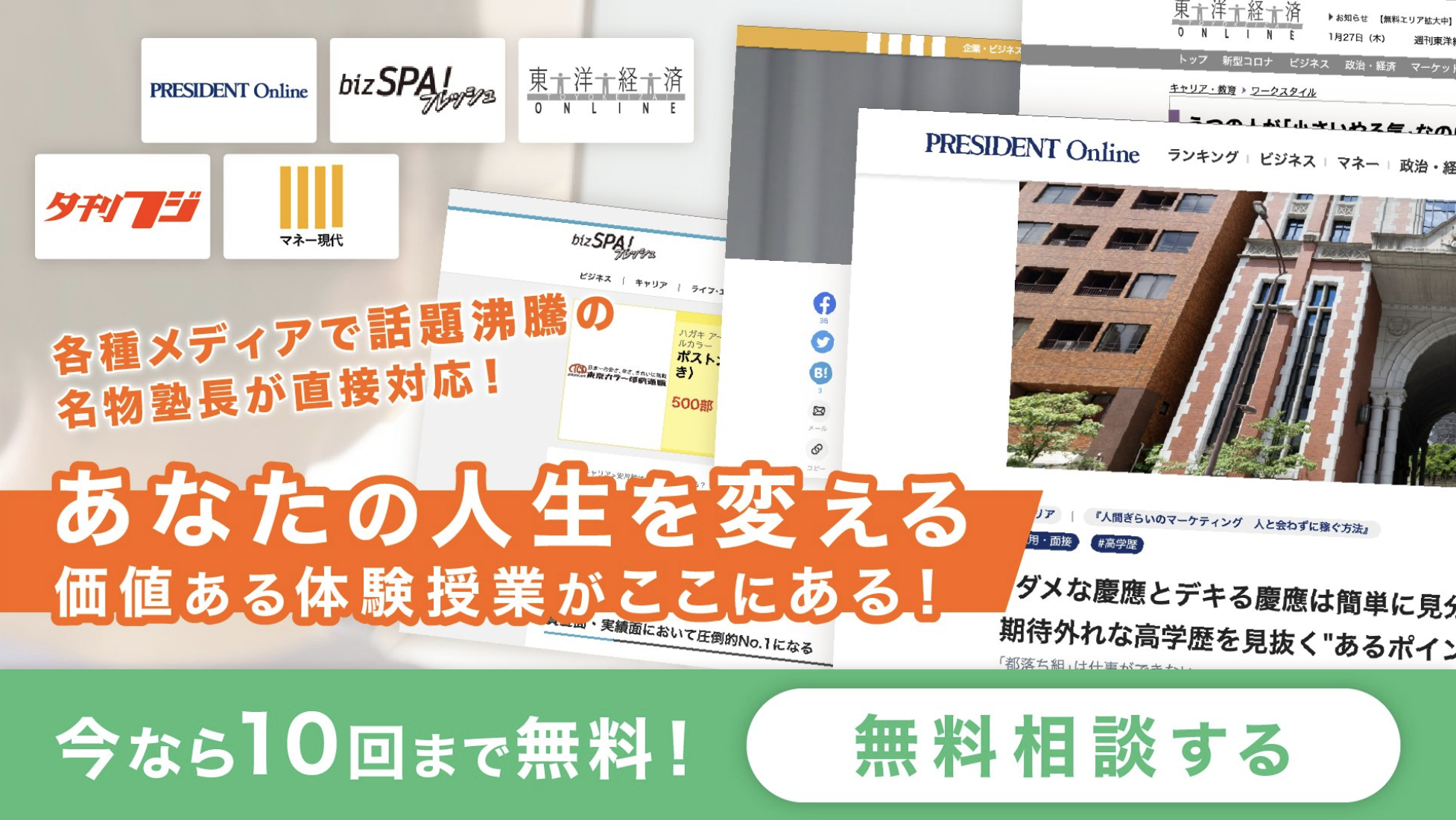[51] Which of the following examples represents the concept of irony discussed in the 4th paragraph?
- Museums, funded by people’s generosity, have become profit-oriented.
- As museums attract more visitors, they get fewer donations from corporations.
- As museums become more popular, they become less credible.
- Museums emphasize beauty, but their management is dirty.
・正答 : 3
・正答の理由 : 第4段落で、美術館が大衆に受け入れられる一方で、その信頼性が問われているという皮肉が語られています。美術館が観客を大幅に増やし、ビジネス界のマーケティング戦略を採用し、コミュニティに対して経済的リターンを生み出す能力を示し始めると、公衆やメディアからの注目が集まり、その運営がより詳細に検討されるようになったことが皮肉とされています。
・不正解の理由:
1: 美術館が利益指向になったという具体的な言及はありません。
2: 美術館がより多くの訪問者を引きつけることと、企業からの寄付が減るという直接の関連は記事中で語られていません。
4: 美術館の管理が汚いという表現は記事中にはありません。
[52] Which of the following hypothetical cases parallels the phrase “conflicts of interest” as applied to museums in the 4th paragraph?
- Superhighways reduce traffic jams, but they create noise and pollution.
- Popular products are not always profitable for the company.
- Social welfare for all requires higher taxes for some.
- Doctors prescribe more medicine than patients need in order to make more money.
・正答 : 4
・正答の理由 : 第4段落では、「利益相反」というフレーズが使われており、美術館が展示をスポンサーに事実上買わせたり、展示内容の制御を寄付者やコレクターに許したり、収入生成のためだけに展示を企画したり、実際または見かけ上の利益相反に関わる取り決めに入ったりすることが問題視されています。これは医者が必要以上の薬を処方して金銭を得る行為と類似しています。
・不正解の理由:
1: 高速道路が交通渋滞を減らすが、騒音と汚染を生むという例は、「利益相反」と直接関連していません。
2: 人気製品が必ずしも会社に利益をもたらすわけではないという事例は、美術館の文脈には適していません。
3: 全員のための社会福祉は一部の人々に高い税金を要求することがありますが、これは美術館における「利益相反」とは異なります。
[53] The Brooklyn museum jeopardized its credibility by
- running an ad campaign that was more sensational than the content of the exhibition.
- trying to hide the fact that Charles Saatchi financed the exhibition.
- not sincerely listening to the mayors criticism.
- criticizing The New York Times for not supporting the museums freedom of exhibition.
・正答 : 2
・正答の理由 : 第7段落では、ブルックリン美術館が展示会の資金提供について公に誤解を招く可能性のある情報を意図的に隠したと非難されています。展示会を資金提供したチャールズ・サーチの事実を隠したことが信用を損なう行為とされています。
・不正解の理由:
1: 広告キャンペーンが展示内容よりも過激だったことが信用問題とはされていません。
3: 美術館が市長の批判を真摯に受け止めなかったという内容はありません。
4: ニューヨークタイムズを批判したという内容は記事中にはありません。
[54] According to the 8th paragraph, which of the following explains the motive of the American Association of the Museums when it stepped into the Brooklyn Museum controversy?
- To prevent the federal government from stepping into the fight in question.
- To protect the reputation of American museums by setting higher professional standards.
- To save the Brooklyn Museum of Art from attack by the mayor and the press.
- To bolster public interest in museum management.
・正答 : 2
・正答の理由 : 第8段落では、アメリカ美術館協会がブルックリン美術館の論争の後に展示の資金調達と利益相反を避けるための新しいガイドラインを採用したことが語られています。これは、美術館がプロフェッショナルな基準を高めることで、一般の信頼を守ることを目的としています。
・不正解の理由:
1: 連邦政府が直接介入するのを防ぐためではありません。
3: ブルックリン美術館をメディアや市長の攻撃から守るためではありません。
4: 一般の関心を美術館の管理に向けるためではありません。
[55] Which of the following does not explain the nature of “public trust” in this article?
- A museum collection is held in trust for the general public.
- Public trust is an invisible investment by the people in the museum.
- Museums cannot destroy their public trust because of their popularity.
- Public trust requires museums to demonstrate responsibility for the common good.
・正答 : 3
・正答の理由 : 「公共の信頼」という言葉は、美術館が一般大衆の利益のために行動し、行動することが期待されていることを意味しています。記事では、公共の信頼が人気によって破壊されることはないと明確にされています。美術館はその人気に関わらず、一般大衆のために責任を持って行動することが求められています。
・不正解の理由:
1: 美術館のコレクションが一般大衆のために保持されているという事実は、公共の信頼の説明に合致しています。
2: 公共の信頼は、美術館に対する人々の目に見えない投資を意味しており、この説明も正しいです。
4: 公共の信頼が美術館に求められる責任と行動規範を必要とすることを説明しており、これも記事の説明に合致しています。
[56] Which of the following would be the author’s interpretation of the Brooklyn Museum controversy?
- Museums should be quiet abodes of the muses for contemplation.
- Museums should use business strategies to become more accessible to the public.
- Museums should be judicious in deploying modern marketing while maintaining their institutional purpose.
- Museums should avoid commercialism and have more scholarly exhibits.
・正答: 3
・正答の理由: ブルックリン美術館の論争に関して、著者は美術館が現代のマーケティング手法を採用する際には、その機関の目的を維持しつつ慎重に行うべきだという解釈を示しています。記事の中で、美術館が大衆に受け入れられる一方で信頼性が問われているという皮肉を示しており、美術館がコマーシャリズムに染まりつつも、教育的使命を忘れずに責任を持って行動すべきであることを強調しています。
・不正解の理由:
1: 著者は静寂な場所としての美術館の役割だけに言及しておらず、現代のマーケティングとその使命のバランスについて論じています。
2: ビジネス戦略を使って公衆にもっとアクセスしやすくすることを提案しているわけではありません。
4: コマーシャリズムを完全に避けるべきだという立場ではなく、商業と教育的目的のバランスを見つけるべきだと主張しています。
[57] Which opinion might the author hold about government-owned museums?
- They should be privatized to be more open and efficient.
- They should be based on public trust, not on government authority.
- Shielding museums’ governance from political interference reduces public trust.
- They are a legacy of old Europe and cannot survive in American democracy.
・正答: 2
・正答の理由: 著者は、美術館が公共の信頼に基づくべきであり、政府権力ではないという意見を持ちそうです。公共の信頼に関するセクションでは、美術館が社会の価値観と一致する行動をすることが期待されていると述べており、私有か公共かに関わらず、公共の利益のために責任を持って行動するべきであることを強調しています。
・不正解の理由:
1: 著者は民営化について言及しておらず、公共の信頼に重点を置いています。
3: 政治的干渉からの保護が公共の信頼を減少させるとは言及していません。
4: 旧ヨーロッパの遺産としての政府所有の美術館についての意見は示されていません。
[58] What was the Brooklyn Museums intention in using the slogan, “Health Warning: the contents of this exhibition may cause shock and vomiting” as shown in the 7th paragraph?
- To discourage the mayor from visiting the museum.
- To summarize the critical response to Charles Saatchis art collection.
- To warn parents not to bring their small children.
- To capture the attention of the public.
・正答: 4
・正答の理由: ブルックリン美術館が使用したスローガンは、公衆の注目を集めることを目的としていました。記事では、美術館が映画スタジオのマーケティング戦術を採用し、議論を呼ぶ広告キャンペーンを展開したことが説明されています。これは、美術館が生み出した注目を自らが対象となることを意味していました。
・不正解の理由:
1: 市長の訪問を阻止する意図は述べられていません。
2: チャールズ・サーチのアートコレクションへの批判的な反応をまとめるためではありません。
3: 小さな子供を連れてこないように警告するためではありません。
[59] Which of the following most closely explains the phrase “they discharge their responsibilities with integrity and diligence” in the last paragraph?
- Museums should become more transparent in balancing economics and mission.
- Museums should serve visitors’ needs for shopping and pleasure as well as education.
- Museums should focus their activities on education and enlightenment.
- Museums should show both new pop art and old national heritage.
・正答: 3
・正答の理由: 最終段落では、美術館が「責任を誠実かつ勤勉に果たしている」というフレーズは、美術館が教育と啓蒙に焦点を当てた活動を行うべきであるということを意味しています。記事全体を通じて、著者は美術館が商業と教育的使命のバランスをどのように保つべきかという問題に焦点を当てており、公共の信頼を維持するためには教育的目的を忘れずに行動することが重要であることを強調しています。
・不正解の理由:
1: 透明性については論じられていますが、これは経済と使命のバランスに関するものであり、直接的に責任を果たす方法についてではありません。
2: 訪問者のショッピングや楽しみのニーズを満たすことは、教育よりも優先されるべきではないという文脈で語られています。
4: 新しいポップアートと古い国家遺産を示すことは言及されていますが、これが美術館の主な責任ではありません。
[60] The moral authority of museums depends on the trust the public bestows upon museums in that
- there is a consensus that the public has the ultimate right to distinguish what is right from what is wrong.
- there is a shared perception among the public that museums are acting for the common good.
- there is an intricate relationship between the public support of museums and the number of visitors.
- the culture of the Enlightenment is generally considered to be the
height of public morality.
・正答: 2
・正答の理由: 美術館の道徳的権威は、公衆が美術館が共通善のために責任を持って行動していると信じることから生じる公衆の信頼に依存していると記事は述べています。これは、美術館が社会が体現すると認識される価値観に従って行動することが期待されているという考えに基づいています。
・不正解の理由:
1: 公衆が何が正しく何が間違っているかを区別する最終的な権利を持っているという合意については言及されていません。
3: 美術館の公衆支援と訪問者数の間の複雑な関係については論じられていません。
4: 啓蒙主義の文化が一般的に公共の道徳性の高みと考えられているとは述べられていません。






コメントを残す